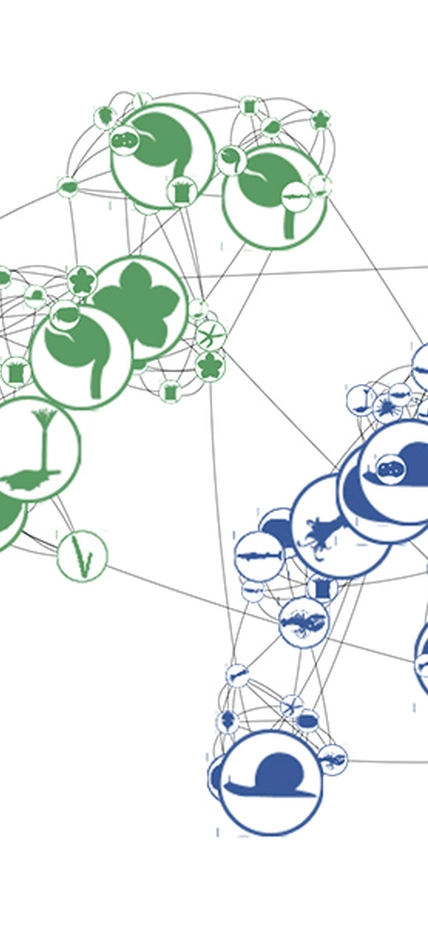Washington, DC—A team of researchers including Carnegie’s Bob Hazen is using network analysis techniques—made popular through social media applications—to find patterns in Earth’s natural history, as detailed in a paper published by Proceedings of the National Academy of Science.
By using network analysis to search for communities of marine life in the fossil records of the Paleobiology Database, the team—including researchers at Harvard University and Rensselaer Polytechnic Institute—was able to quantify the ecological impacts of major events like mass extinctions. Their work may help humanity anticipate the consequences of a “sixth mass extinction,” which the rate of species disappearance over the past few decades has led many scientists suspect we are in the midst of right now.
“The fossil record contains evidence of repeated mass extinctions. Data on how ancient communities of organisms changed during these events can help us understand the potential consequences of the present-day biodiversity crisis,” said lead author Drew Muscente of Harvard. “Our work shows that this crisis, regardless of what you call it, may irreparably alter communities of organisms and their ecosystems in some surprising ways, which can’t be predicted with other methods.”
One picture that emerges from the analysis is a ranking of the ecological impact of major events, with the largest effect on ecology coming from the increase in marine and terrestrial life called the Great Ordovician Biodiversification Event, which started just shy of 500 million years ago. This is followed in impact ranking by four mass extinction events: the Permian-Triassic, Cretaceous-Paleogene, Devonian, and Triassic-Jurassic.
Social network analysis can be used on social media to identify groups of friends, track the spread of disease, and even search for members of extremist groups. It does this by identifying communities of people—whose common attributes like location, interests, or gender—reveal their association absent an outright declaration.
Just as network analysis reveals communities of people, researchers can use network analysis on scientific databases to discover associations of ancient organisms that lived in the past and then learn something about how those “paleocommunities” changed over time.
“You hear about it in all kinds of fields, but until recently no one had applied big data methods to mineralogy and natural history,” added Hazen.
“The power of our approach is that multidimensional data embedded in the network can inform and discover trends in the data, turning an endless grid of numbers into a picture that reveals multiple relationships at a glance,” said co-author Rensselaer’s Peter Fox.
Last year, the team applied network analysis to a mineralogical database. That paper, published by American Mineralogist, predicted the existence of 1,500 as yet undiscovered minerals, at least 14 of which have since been found.
“Network analysis can provide visual clues to mineralogists regarding where to go and what to look for, which will expand the rate of mineral discovery beyond what we can currently imagine,” said Hazen, who led that earlier work upon which this paper was built together with Carnegie’s Shauna Morrison.
This time, the team tackled the Paleobiology Database, which contains data on the locations, ages, environments, and affinities of fossils, representing more than 350,000 ancient taxa preserved at more than 190,000 points around the world during the last 600 million years of Earth history. The team restricted their dataset to occurrences of fossils of marine animals that lived in the Phanerozoic Eon, the interval of time that began with the explosion of animal life 541 million years ago and continues to the present day.
In the graphs their social network analysis creates from this data, taxa and communities that lived at different times in Earth history are distributed throughout the networks, which can then be used to understand the connections and trends that link them.
Top Image Caption: Network analysis of marine fossil records over the past 541 million years revealed the ecological impact of mass extinctions and may help us anticipate the consequences of a "sixth mass extinction." Image is courtesy of Rensselaer Polytechnic Institute.
__________________
This work is part of a larger project that’s funded with a three-year grant from the W.M. Keck Foundation.
